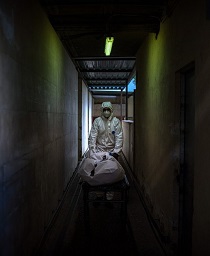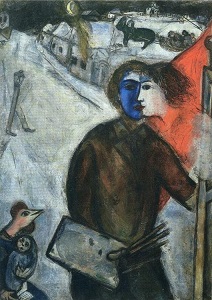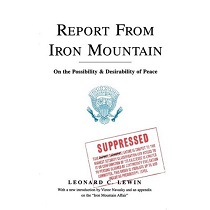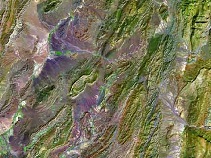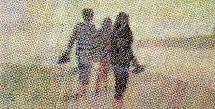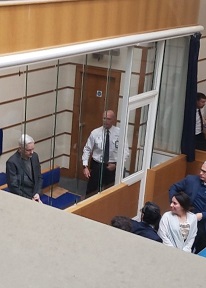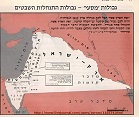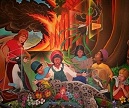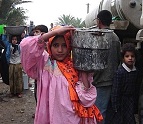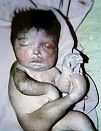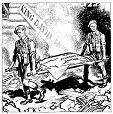Out of Sight, Out of Mind
Thunder Horse
Hidden away, out of sight but dotting the landscape of America, are the little known or forgotten Reservations of the Indigenous People of our land. Sadly, the average U.S. mainstream resident knows almost nothing about the people of the Native American reservations other than what romanticized or caricaturisation versions they see on film
or as the print media stereotypes of oil or casino-rich Indians. Most assume that whatever poverty exists on a reservation is most certainly comparable to that which they might experience themselves. Further, they assume it is curable by the same means they would use. But that is the arrogance of ignorance.
Our dominant society is accustomed to being exposed to poverty. It’s nearly invisible because it is everywhere.
We drive through our cities with a blind eye, numb to the suffering on the streets, or we shake our heads and turn away, assuming help is on the way. After all, it’s known that the government and the big charities are helping the needy in nearly every corner of the world.
But the question begs: What about the sovereign nations on America’s own soil, within this country, a part and yet apart from mainstream society? What about these Reservations that few people ever see?
Despite nearly-insurmountable conditions, few resources, and against unbelievable odds, Nation after Nation of Indigenous leaders and their people are working hard to counteract decades of oppression and forced destruction of their cultures, to bring their citizens back to a life of self-respect and self-sufficiency in today’s world.
In the meantime, these words will serve simply to dispel a few illusions and make public part of that which is hidden away, out of sight, out of mind, in the richest country in the world. It seeks to dispel the arrogance of ignorance.

The Pine Ridge Oglala Lakota (Sioux) Indian Reservation sits in Bennett, Jackson, and Shannon Counties and is located in the southwest corner of South Dakota, fifty miles east of the Wyoming border. The 11,000-square mile (approximately 2,700,000 acres) Pine Ridge Reservation is the second-largest Native American Reservation within the United States. It is roughly the size of the State of Connecticut. According to the Oglala Sioux tribal statistics, approximately 1,700,000 acres of this land are owned by the Tribe or by tribal members. The Reservation is divided into eight districts: Eagle Nest, Pass Creek, Wakpamni, LaCreek, Pine Ridge, White Clay, Medicine Root, Porcupine, and Wounded Knee. The topography of the Pine Ridge Reservation includes the barren Badlands, rolling grassland hills, dryland prairie, and areas dotted with pine trees. The Pine Ridge Reservation is home to approximately 40,000 persons, 35% of which are under the age of 18. The latest Federal Census shows the median age to be 20.6 years. Approximately half the residents of the Reservation are registered tribal members of the Oglala Lakota Sioux Nation. According to the most recent Federal Census, 58.7% of the grandparents on the Reservation are responsible for raising their own grandchildren. The population is slowly but steadily rising, despite the severe conditions on the Reservation, as more and more Oglala Lakota return home from far-away cities to live within their societal values, be with their families, and assist with the revitalization of their culture and their Nation.

The small BIA/Tribal Housing Authority homes on the Pine Ridge Reservation are overcrowded and scarce, resulting in many homeless families who often use tents or cars for shelter. Many families live in old cabins or dilapidated mobile homes and trailers. The majority of the current Tribal Housing Authority homes were built from 1970-1979. The report brings to light that a great percentage of that original construction by the BIA (Bureau of Indian Affairs) was “shoddy and substandard.” The report also states that 26% of the housing units on the Reservation are mobile homes, often purchased or obtained (through donations) as used, low-value units with negative-value equity. Even though there is a large homeless population on the Reservation, most families never turn away a relative no matter how distant the blood relation. Consequently, many homes often have large numbers of people living in them. In a recent case study, the Tribal Council estimated a need for at least 4,000 new homes in order to combat the homeless situation. There is an estimated average of 17 people living in each family home (a home which may only have two to three rooms). Some larger homes, built for 6 to 8 people, have up to 30 people living in them. Over-all, 59% of the Reservation homes are substandard.

Over 33% of the Reservation homes lack basic water and sewage systems as well as electricity. Many residents must carry (often contaminated) water from the local rivers daily for their personal needs. Some Reservation families are forced to sleep on dirt floors. Without basic insulation or central heating in their homes, many residents on the Pine Ridge Reservation use their ovens to heat their homes. Many Reservation homes lack adequate insulation. Even more homes lack central heating. Periodically, Reservation residents are found dead from hypothermia (freezing). It is reported that at least 60% of the homes on the Pine Ridge Reservation need to be burned to the ground and replaced with new housing due to infestation of the potentially-fatal Black Mold and Stachybotrys. There is no insurance or government program to assist families in replacing their homes. 39% of the homes on the Pine Ridge Reservation have no electricity. The most common form of heating fuel is propane. Wood-burning is the second most common form of heating a home although wood supplies are often expensive or difficult to obtain. Many Reservation homes lack basic furniture and appliances such as beds, refrigerators, and stoves. 60% of Reservation families have no land-line telephone. The Tribe has recently issued basic cell phones to the residents. However, these cell phones (commonly called commodity phones) do not operate off the Reservation at all and are often inoperable in the rural areas on the Reservation or during storms or wind. Computers and internet connections are very rare. Federal and tribal heat assistance programs (such as LLEAP) are limited by their funding. In the winter of 2005-2006, the average one-time only payment to a family was said to be approximately $250-$300 to cover the entire winter. For many, that amount did not even fill their propane heating tanks one time.

Most Reservation families live in rural and often isolated areas. The largest town on the Reservation is the village of Pine Ridge which has a population of approximately 5,720 people and is the administrative center for the Reservation. There are few improved (paved) roads on the Reservation and most of the rural homes are inaccessible during times of rain or snow. Weather is extreme on the Reservation. Severe winds are always a factor. Traditionally, summer temperatures reach well over 110°F and winters bring bitter cold with temperatures that can reach - 50°F or worse. Flooding, tornados, or wildfires are always a risk. The Pine Ridge Reservation still has no banks, discount stores, or movie theaters. It has only one grocery store of any moderate size and it is located in the village of Pine Ridge on the Reservation. A motel just opened in 2006 near the Oglala Lakota College at Kyle, South Dakota. There are said to be about 8 Bed and Breakfast or campsite locations found across the Reservation but that number varies from time to time since most are part of a private home.

Several of the banks and lending institutions nearest to the Reservation have been targeted for investigation of fraudulent or predatory lending practices, with the citizens of the Pine Ridge Reservation as their victims. There are no public libraries except one at the Oglala Lakota College. There is 1 radio station on the Pine Ridge Reservation. KILI 90.1FM is located near the town of Porcupine on the Reservation. There is no public transportation available on the Reservation. Only a minority of Reservation residents own an operable automobile. Predominant form of travel for all ages on the Reservation is walking or hitchhiking. There is one very small airport on the Reservation servicing both the Pine Ridge Reservation and Shannon County. It’s longest, paved runway extends 4,969 feet. There are no commercial flights available. The majority of flights using the airport are Federal, State, or County Government-related. The nearest commercial airport and/or commercial bus line is located in Rapid City, South Dakota (approximately 120 miles away).
__________________________________________________________________________________
Source: http://www.republicoflakotah.com/2009/out-of-sight-out-of-mind/
Also by Thunder Horse: The Role of the Bald Eagle in the Native American Culture


